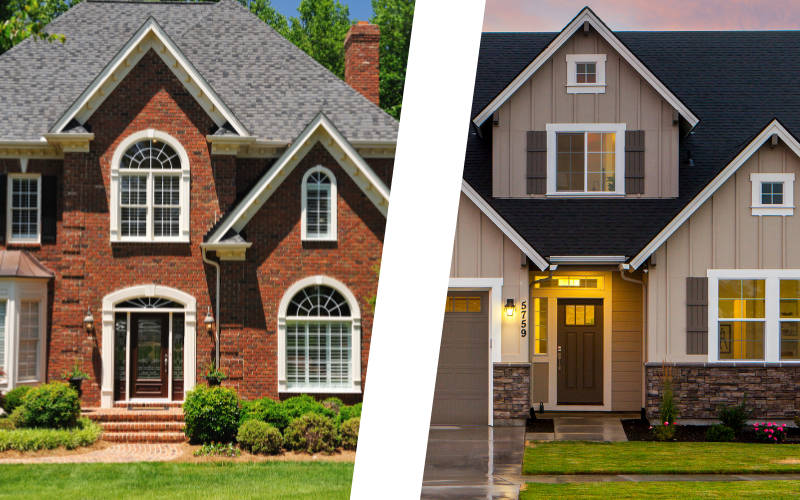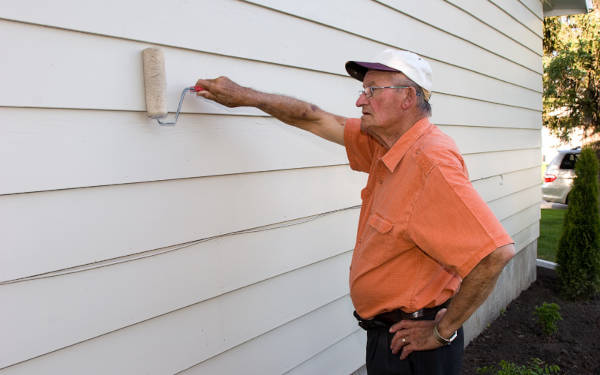When it comes to exterior finishing, you have a lot to think about. Many home builders choose between brick veneer and cladding to finish their properties and have to weigh up the pros and cons between the two. But which is better?
A brick veneer is better than cladding in protecting your home from the elements. It has a higher initial installation cost, but requires very little ongoing maintenance. Home builders often choose brick veneer over cladding as it’s more durable and cost effective in the long run.
How durable is brick veneer?
Brick is one of the most resistant and durable materials available to homebuilders. If your property is constructed mainly from metal, concrete or even wood, you might want to add a stylish brick veneer finish to the front of your property. You don’t have to worry about the veneer’s deterioration, as bricks are extremely weather and fire resistant. They won’t need to be replaced anytime soon. Most brick veneers will stand for decades without showing signs of wear and tear, making it the ideal external fitting to your property.
Does cladding deteriorate over time?
While brick is incredibly robust, cladding will deteriorate and become damaged over time. As a result of weathering and general ageing, the exterior cladding will begin to crack and peel, causing homeowners issues with dampness and rusting [depending on the material]. Cladding will also discolour due to exposure to sunlight. This gives it a somewhat bleached and distressed look. If you use cladding, you will need to paint and regularly treat it to ensure it is well maintained.
Isn’t cladding cheaper than brick veneer, though?
In most cases, cladding will initially be cheaper than brick veneer because it’s mass-produced and is a cheap building material. It’s also quick and straightforward to assemble, making things easy for your builder. But to ensure your cladding is fire and weather resistant, you will have to paint and treat it and probably pay to have it maintained after a few years. So, while it’s cheaper to install than brick veneer, the associated hassle and maintenance costs will likely mount up in the near future.
What’s the difference between ‘brick’ and ‘brick’ veneer?
People often get confused between ‘brick’ and ‘brick veneer.’ In actual fact, there’s no difference between the materials used in a brick wall and a brick veneer; it’s a standard masonry brick. The difference comes in the way they are assembled. A solid brick construction consists of two layers of bricks back-to-back that are joined by cement. A brick veneer is a layer of masonry brick that has a one-inch air space before the second level of interior masonry brick. Although slightly different, veneer is still incredibly durable.
What types of brick veneer can I choose from?
Masonry bricks come in all sorts of shapes, sizes, and colours. The most common type of brick is made from burnt clay. But there are also concrete, sand-lime, and even ash bricks that can be used in construction. Providing you have the budget and materials available, you can construct your veneer from any type of Masonry brick that you choose. This is another reason why brick veneers are so popular with homebuilders.
Are there any drawbacks to choosing brick veneer instead of cladding?
As with all decisions when constructing, there are pros and cons to everything. The same is true of brick veneer. As we’ve already mentioned, bricks are more expensive to buy than cladding. This means you have to plan your initial budget well. Also, bricks are relatively limited in their colour range, but you can choose cladding in almost any colour imaginable. While you can paint bricks, this is a tiresome process and will add a lot of time to the building process as well as ongoing maintenance. Cladding offers slightly more variety in terms of design than bricks, but it will need more maintenance over time.
Do I need planning permission to add a brick veneer to my home?
Providing you’re making relatively minor changes to your home; you probably won’t need to seek planning permission before doing the work. On some commercial properties, planning permission is required for some types of cladding. For more information about planning permission for building projects in Ireland, click here.
The verdict: brick veneer vs cladding
Given its durability and style, we would say that brick veneer is better than cladding. Brick also requires less maintenance and will retain its properties over time. Cladding, on the other hand, needs a lot of work and maintenance to ensure it retains its colour and features. This is because cladding is less weather and fire-resistant than brick. Perhaps the only reason to choose cladding over brick veneer is that the initial cost of cladding is cheaper than bricks. But as we’ve mentioned, as a result of maintenance and repair costs, you will spend more looking after your cladding over time.
So, our verdict? If your budget permits, go for brick veneer over cladding. It’s more durable, looks better, and will enrich the overall value of your property.
Need a great range of bricklaying tools, Paragon Masonry tools has a great range of bricklaying tools for sale.
Let us know in the comments your experiences with cladding or brick veneer homes and what advice you would give those looking to buy or build their own!




